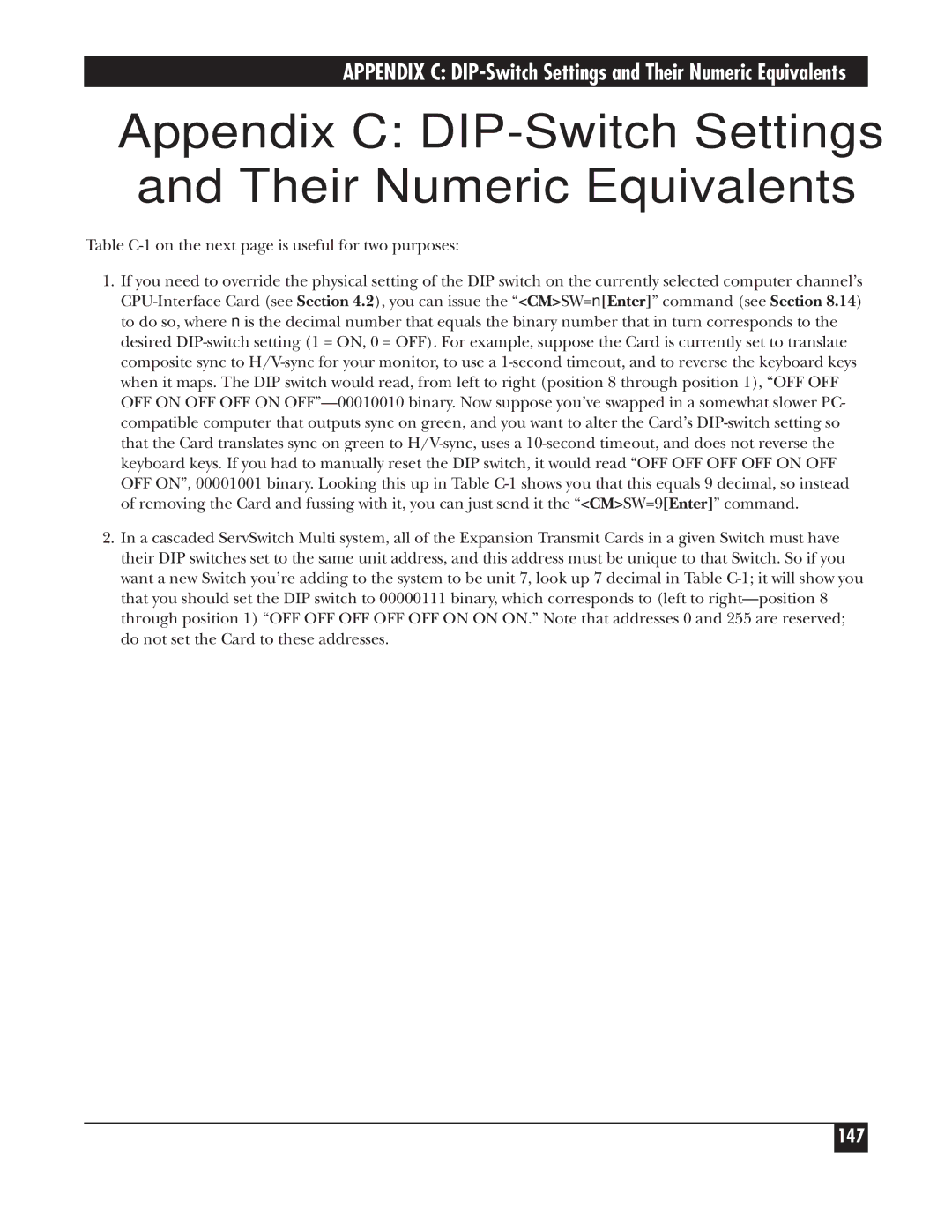
APPENDIX C: DIP-Switch Settings and Their Numeric Equivalents
Appendix C: DIP-Switch Settings and Their Numeric Equivalents
Table C-1 on the next page is useful for two purposes:
1.If you need to override the physical setting of the DIP switch on the currently selected computer channel’s CPU-Interface Card (see Section 4.2), you can issue the “<CM>SW=n[Enter]” command (see Section 8.14) to do so, where n is the decimal number that equals the binary number that in turn corresponds to the desired DIP-switch setting (1 = ON, 0 = OFF). For example, suppose the Card is currently set to translate composite sync to H/V-sync for your monitor, to use a 1-second timeout, and to reverse the keyboard keys when it maps. The DIP switch would read, from left to right (position 8 through position 1), “OFF OFF OFF ON OFF OFF ON OFF”—00010010 binary. Now suppose you’ve swapped in a somewhat slower PC- compatible computer that outputs sync on green, and you want to alter the Card’s DIP-switch setting so that the Card translates sync on green to H/V-sync, uses a 10-second timeout, and does not reverse the keyboard keys. If you had to manually reset the DIP switch, it would read “OFF OFF OFF OFF ON OFF OFF ON”, 00001001 binary. Looking this up in Table C-1 shows you that this equals 9 decimal, so instead of removing the Card and fussing with it, you can just send it the “<CM>SW=9[Enter]” command.
2.In a cascaded ServSwitch Multi system, all of the Expansion Transmit Cards in a given Switch must have their DIP switches set to the same unit address, and this address must be unique to that Switch. So if you want a new Switch you’re adding to the system to be unit 7, look up 7 decimal in Table C-1; it will show you that you should set the DIP switch to 00000111 binary, which corresponds to (left to right—position 8 through position 1) “OFF OFF OFF OFF OFF ON ON ON.” Note that addresses 0 and 255 are reserved; do not set the Card to these addresses.

